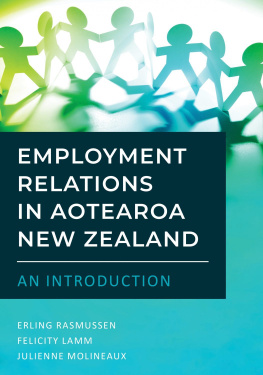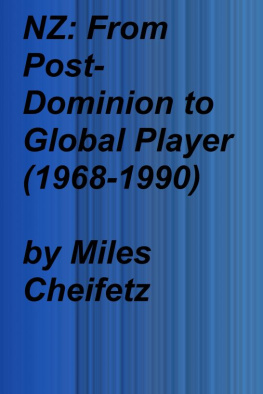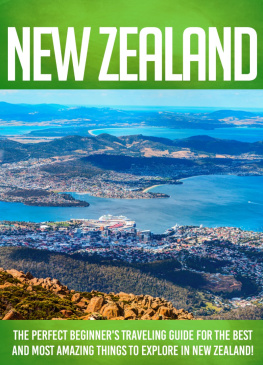Voters Vengeance
Voters Vengeance
The 1990 Election in New Zealand and the Fate of the Fourth Labour Government
JACK VOWLES
PETER AIMER
First published 1993
This ebook edition 2013
Auckland University Press
University of Auckland
Private Bag 92019
Auckland 142
www.press.auckland.ac.nz
Jack Vowles and Peter Aimer 1993
Charles Crothers and Jack Vowles 1993, chapter 7
This book is copyright. Apart from fair dealing for the purpose of private study, research, criticism, or review, as permitted under the Copyright Act, no part may be reproduced by any process without the prior permission of Auckland University Press.
eISBN 978 1 86940 712 4
The busy people image on the cover is reproduced with the kind permission of the Audio-Visual Unit, Australian Defence Force Academy, Canberra.
Cover design by Suellen Allen
Typeset by Egan-Reid Ltd, Auckland
Distributed outside New Zealand by
Oxford University Press
Contents
List of Tables, Figures and Graphs
Note: All tables in this book are sourced in the 1990 and 1987 NZES data unless otherwise indicated.
List of Tables
List of Figures
List of Graphs
Acknowledgements
Despite the changing ethos of the 1980s the willingness of New Zealanders to do things for no tangible personal advantage or reward and in the interests of the public good has by no means disappeared, for nearly 70 per cent of the people to whom we sent a questionnaire participated in the study reported in this book. It is they, the respondents, who made this book possible and accordingly it is dedicated to them.
The authors would also like to acknowledge inspiration, advice and help from a number of sources. Although at very different times in the past, both authors were once students of Emeritus Professor Robert Chapman. His enthusiasm for electoral studies was obviously infectious and lasting. More recently, our work has been supported in practical and other ways, in particular by Professor Ian McAllister (ADFA, Canberra), Dr Clive Bean (ANU, Canberra), and Professor Henry Valen (Oslo). Professor Keith Jackson and Dr Jim Lamare (both from the University of Canterbury) read an early draft of the book and made useful critical comments. The Heylen Research Centre assisted by providing data, commenting on . We are also grateful to colleagues in our respective departments for encouragement and criticism. Indeed, had our departments not been supportive of the project, it would not have been possible to undertake, let alone complete, the research for this book. Many people worked to prepare the data and assist us in its analysis, too many to name everyone. However, for his work in linking the census data by electorate into the dataset, Sun-Kwang Bae deserves special mention, as do the staff of the UK Work Centre, University of Waikato. Richard Selinkoff and Chandra Dixon made the experience of coding a lot more enjoyable than it might otherwise have been. Mike Crawshaw delved into newspapers and polling data from time to time. At Auckland University Press, the authors were greatly encouraged by Elizabeth Caffins enthusiastic appraisal of our outline and early draft, while Gillian Kootstra improved our best efforts with disarming ease. Ultimately the project was only possible because of the generosity and wisdom of the former Social Sciences Research Fund Committee and the present Foundation for Research, Science and Technology, which funded the survey.
Finally, the respective families of both authors have lived with the project from the outset and we are grateful for their tolerance of our distraction during the period of this study. All that we now ask of Rae, Anna and Polly is that they do not assume that this is the last time.
Preface
The 1990 election precipitated New Zealands most dramatic parliamentary transformation for over fifty years. The countrys boldest and most decisive government since the 1930s was despatched from power, and with Labour defeated, a new National government was elected. Nationals massive parliamentary majority, however, belied the more complex movements of public opinion, many of which were a rejection not just of Labour, but of National as well. Meanwhile people discouraged, disappointed, and disillusioned with the Labour Government justified their participation in the process of Labours defeat as an act of vengeance. To others, the defeat of the Fourth Labour Government was akin to a classical tragedy. A brave and noble government had fallen, in part because of its own flaws and failings.
The 1990 election was a milestone in New Zealands political history. This book documents that election, and is about both politics and people. It recalls the major landmarks of the Fourth Labour Governments eventful term, but attempts to do so largely from the perspectives of the voters themselves. We have sought to introduce readers to the analysis of comprehensive survey research, a technique which allows us to get closer to and understand the opinions and political behaviour of ordinary people. During the weeks after the election, the organisers of the 1990 New Zealand Election Survey (NZES) received by return mail or, in some cases, by telephone, answers to over 2000 questionnaires from a national random sample of New Zealanders on the electoral rolls, including people from all electorates, and from all parts of society.
The range of questions we asked is explained in depth in .
The popular understanding of elections assumes that voters choose between parties according to their personal issue preferences and how these accord with party policies. addresses the political implications of public attitudes on a range of issues where liberal and conservative opinion often clash, such as defence and nuclear weapons, and the role of women.
attempts to put the pieces together, assessing the relative influence of all these matters on voting choice, and seeking to construct a map of the thinking of voters at the beginning of the 1990s.
Jack Vowles
Peter Aimer
1
Introduction: Asking the People
Every three years the New Zealand public is invited to share in the expression of raw emotion that for many years has climaxed the democratic contest for power between National and Labour. Moving around the parties election-night headquarters amidst that heady mix of sweat, alcohol and adrenalin, the TV cameras capture the moods of the party workers. It is a study in contrasts. In one venue there will be noise and elation; in the other there is subdued apprehension turning to despair as the electoral verdict becomes clear. Largely because of the first-past-the-post electoral system that New Zealand shares with the other Anglo-American democracies, electoral contests in New Zealand are essentially zero-sum, winner-takes-all occasions. There is thus little solace for the losers. So the climax of the evening, when the outcome can no longer be doubted, demands a stoical public concession of defeat by the loser to a jubilant but appropriately humble victor.
On election night, 27 October 1990, it was unusually early in the evening before ten oclock when, not without a little difficulty, a crestfallen Mike Moore got in touch with an elated Jim Bolger to concede that his brief tenure as prime minister had come to an end, along with the Fourth Labour Governments historic second term of office. By then the result of the election was clear, even if the exact details were not known. Labours loss was not unexpected bets on Labours being re-elected had long since been off or translated into wagers on the size of Nationals majority. Even so, the scale of Labours loss took many people by surprise. At the final tally of seats (after a recount had rescued Labours Fran Wilde in Wellington Central), Labour had plunged from 56 parliamentary places to 29, while National had risen from 41 to 67. Rubbing political salt into Labours electoral wounds, Jim Anderton, who had left Labour in 1989 to establish and lead the NewLabour Party, retained the 97th seat.
Next page







